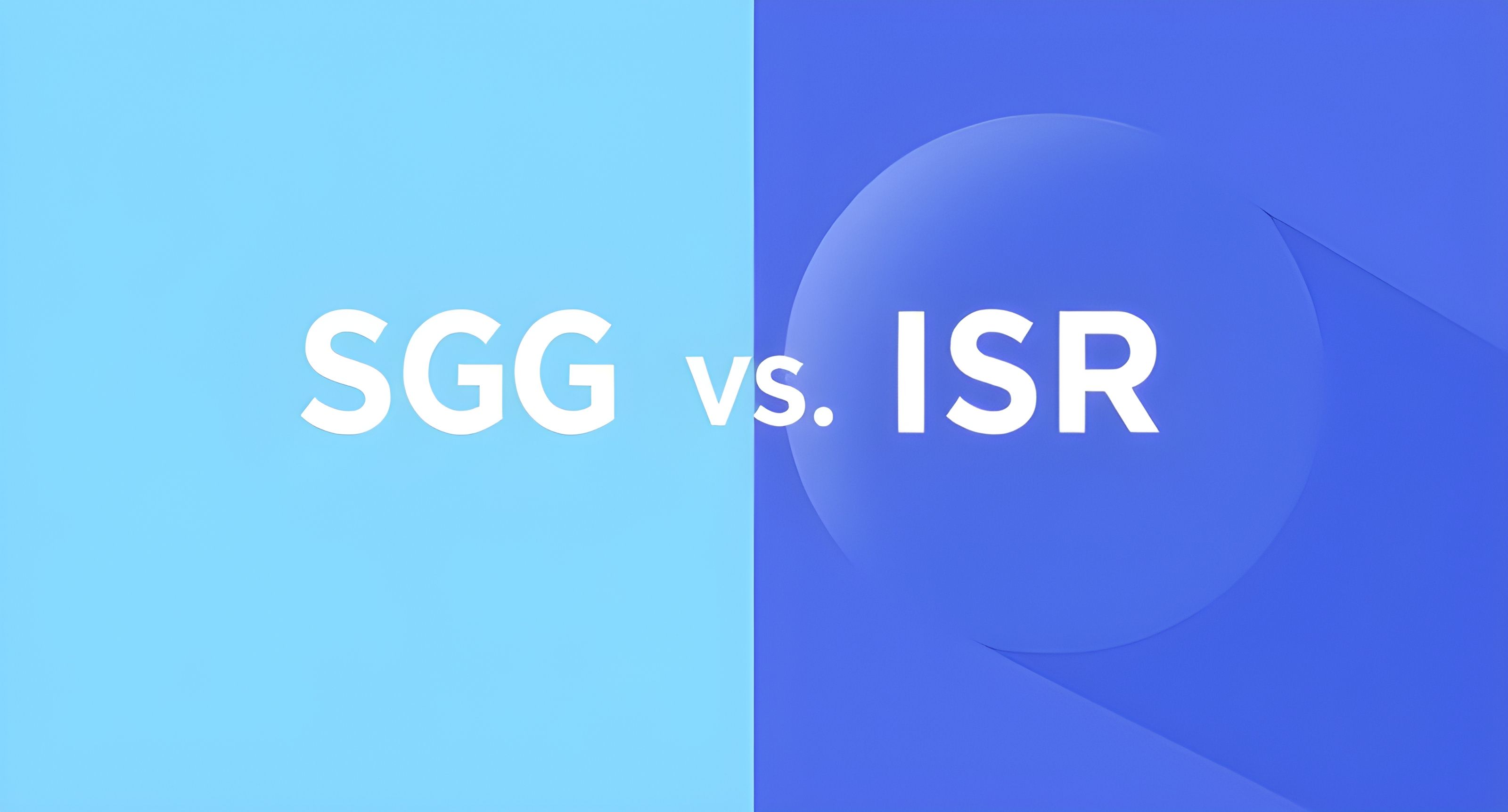When developing with Next.js, choosing the right rendering strategy is crucial to achieving optimal performance, SEO, and user experience. Two popular approaches are Static Site Generation (SSG) and Incremental Static Regeneration (ISR). But which one should you choose for your project? Let’s dive into their differences, benefits, and best use cases.
What is Static Site Generation (SSG)?
Static Site Generation (SSG) is a pre-rendering strategy where pages are generated at build time. This means that HTML files are created once and served to users instantly when requested.
Key Benefits of SSG
- Blazing-fast performance: Since pages are served as static files, loading speeds are extremely fast.
- SEO-friendly: Pre-generated content is indexed by search engines easily, enhancing visibility.
- Reduced server load: No need for on-the-fly rendering, reducing infrastructure costs.
- Improved security: Static files reduce exposure to vulnerabilities compared to dynamic pages.
Best Use Cases for SSG
- Blogs and news websites
- Documentation pages
- Marketing landing pages
- E-commerce product listing pages (without frequent updates)
Example of SSG in Next.js
export async function getStaticProps() {
const res = await fetch('https://api.example.com/posts');
const data = await res.json();
return {
props: {
posts: data,
},
};
}
export default function Blog({ posts }) {
return (
<ul>
{posts.map((post) => (
<li key={post.id}>{post.title}</li>
))}
</ul>
);
}What is Incremental Static Regeneration (ISR)?
Incremental Static Regeneration (ISR) allows pages to be generated statically at build time and incrementally updated at runtime without rebuilding the entire site.
Key Benefits of ISR
- Fresh content delivery: Allows updates to be reflected without a full site redeploy.
- Scalability: Ideal for large-scale applications with frequently changing content.
- SEO-friendly: Ensures new content is indexed while benefiting from static rendering performance.
- Lower build times: Instead of regenerating the entire site, only specific pages are updated.
Best Use Cases for ISR
- E-commerce product pages (with price updates)
- Event listings and ticketing systems
- User-generated content platforms
- Dynamic blog pages with frequent updates
Example of ISR in Next.js
export async function getStaticProps() {
const res = await fetch('https://api.example.com/products');
const data = await res.json();
return {
props: {
products: data,
},
revalidate: 60, // Rebuild the page every 60 seconds
};
}
export default function Products({ products }) {
return (
<ul>
{products.map((product) => (
<li key={product.id}>{product.name}</li>
))}
</ul>
);
}SSG vs ISR: A Side-by-Side Comparison
| Criteria | SSG | ISR |
|---|---|---|
| Rendering Time | Build time | Build + runtime |
| Performance | Fast (pre-built pages) | Fast with real-time updates |
| Use Cases | Static content, blogs | Dynamic content, e-commerce |
| SEO Benefits | Excellent | Excellent |
| Freshness of Data | Stale until rebuild | Fresh without full rebuild |
When to Choose SSG or ISR in Your Next.js Project?
Choosing between SSG and ISR depends on several factors:
Choose SSG if:
- Your content doesn’t change frequently.
- You need the fastest load times.
- SEO is a top priority.
- You want minimal server-side complexity.
Choose ISR if:
- Your content updates regularly but not instantly.
- You need a balance between static performance and real-time updates.
- You want to avoid frequent builds.
- You handle large datasets that can’t be fully pre-built.
Combining SSG and ISR for Optimal Performance
A hybrid approach using both SSG and ISR in the same Next.js application can maximize performance and flexibility. For instance:
- Use SSG for static pages such as the homepage, blog, and documentation.
- Use ISR for pages that require frequent updates, such as product listings and pricing pages.
SEO Considerations for SSG and ISR
Both rendering approaches are SEO-friendly, but it’s essential to consider the following best practices:
SSG SEO Tips:
- Pre-render critical pages to improve indexing.
- Use schema markup for better search engine understanding.
- Optimize image loading with Next.js features like next/image.
ISR SEO Tips:
- Set appropriate revalidation times to ensure fresh content.
- Monitor page update frequency to avoid outdated content.
- Implement caching strategies to balance load time and freshness.
Conclusion
Both SSG and ISR offer unique advantages when developing with Next.js, and the right choice depends on your project’s specific requirements. If performance and SEO are your priorities, SSG is ideal. If your content requires frequent updates with scalability, ISR is the way to go.
By understanding their differences and combining them where necessary, you can build high-performance, SEO-optimized, and user-friendly web applications.
